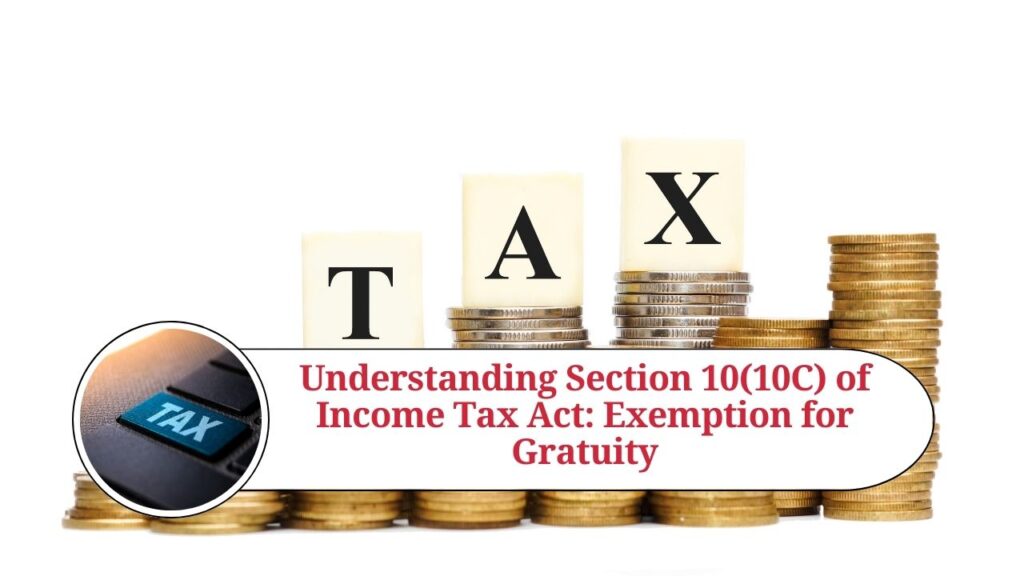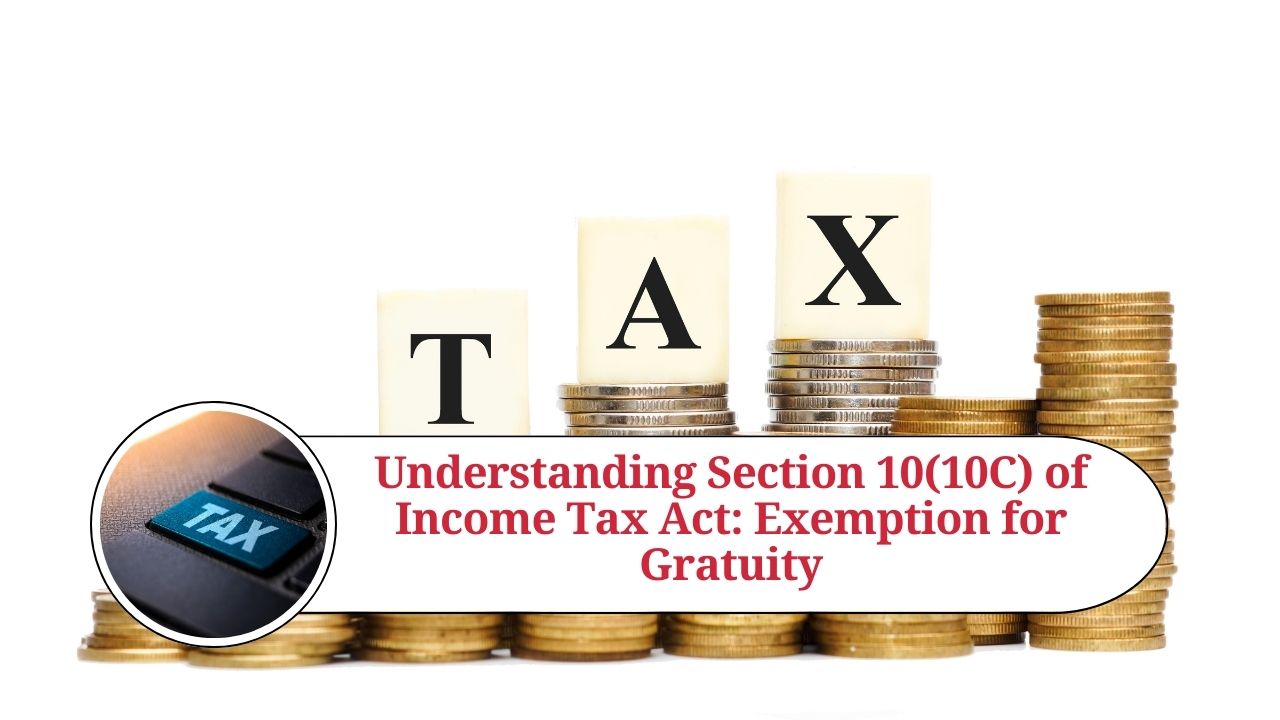Understanding Section 10C and 10CC of the Income Tax Act: A Comprehensive Guide
Introduction
Taxation can be complex, especially when it comes to understanding the various exemptions available under the Income Tax Act. Among these, Sections 10C and 10CC offer significant benefits to employees in certain circumstances. This blog will delve into the details of these sections, explaining who is eligible for these exemptions, under what conditions they apply, and how they can benefit you.
Section 10C: Voluntary Retirement and Termination Benefits
Section 10C of the Income Tax Act provides tax exemptions on amounts received by an employee on voluntary retirement or termination of service. This section is particularly beneficial for employees of public sector companies, other companies, and various government and educational institutions.
Eligibility for Exemption
Under Section 10C, the amount received on voluntary retirement or termination is exempt from tax if it is received from:
- A Public Sector Company
- Any Other Company
- An Authority Established Under a Central, State, or Provincial Act
- A Local Authority
- A Co-operative Society
- A University Established or Incorporated by or Under a Central, State, or Provincial Act
- An Institution Declared to be a University Under Section 3 of the University Grants Commission Act, 1956
- An Indian Institute of Technology (IIT) Within the Meaning of Section 3 of the Institutes of Technology Act, 1961
- Any State Government
- The Central Government
- An Institution of National or State Importance as Specified by the Central Government
Institutes of Management as Specified by the Central Government
Conditions for Exemption
To qualify for the exemption under Section 10C, the following conditions must be met:
- The amount received must not exceed five lakh rupees.
- The schemes of voluntary retirement or separation must be framed according to prescribed guidelines, including economic viability.
- If an exemption has been allowed under this clause for any assessment year, it cannot be claimed again for any subsequent assessment year.
- If relief under Section 89 has been allowed for any assessment year, no exemption under this clause can be claimed for that or any other assessment year.

Section 10CC: Tax on Non-Monetary Perquisites
Section 10CC provides tax relief on income received as non-monetary perquisites. This section is aimed at simplifying the tax treatment of certain benefits provided by employers to their employees.
Key Provisions
- In the case of an employee deriving income in the form of non-monetary perquisites under Section 17(2), the tax on such income, if paid by the employer on behalf of the employee, is exempt from income tax.
- This provision is applicable notwithstanding anything contained in Section 200 of the Companies Act, 1956.
Practical Implications
These provisions are designed to provide financial relief and simplify tax obligations for employees in specific situations. For example:
Voluntary Retirement Schemes (VRS):
Employees opting for VRS from eligible organizations can benefit from tax exemptions up to five lakh rupees, provided the scheme adheres to the prescribed guidelines.
Non-Monetary Perquisites:
Employees receiving benefits such as housing, cars, or other perks from their employers can have the tax on these benefits paid by the employer, making it easier to manage their tax liabilities.
Frequently Asked Questions (FAQ)
1. Who is eligible for tax exemption under Section 10C?
Employees of public sector companies, other companies, authorities established under Central, State, or Provincial Acts, local authorities, co-operative societies, certain universities, IITs, State and Central Governments, and specified institutions can claim this exemption.
2. What is the maximum amount exempted under Section 10C?
The maximum amount that can be exempted under Section 10C is five lakh rupees.
3. Can I claim the exemption under Section 10C multiple times?
No, if you have claimed an exemption under Section 10C for any assessment year, you cannot claim it again for subsequent assessment years.
4. What are non-monetary perquisites as mentioned in Section 10CC?
Non-monetary perquisites are benefits provided by the employer that are not in the form of cash, such as housing, cars, or other perks.
5. How does Section 10CC benefit employees?
Section 10CC allows the employer to pay the tax on non-monetary perquisites on behalf of the employee, making the employee’s tax liability easier to manage.
Conclusion
Understanding Sections 10C and 10CC of the Income Tax Act can significantly benefit employees by reducing their taxable income and simplifying tax obligations. Whether you are considering voluntary retirement or receiving non-monetary perks from your employer, knowing these provisions can help you make informed financial decisions.
For further details or specific case laws related to these sections, it is advisable to consult a tax professional or refer to official guidelines provided by the Income Tax Department.
For more insights and expert advice on tax-saving strategies, visit www.smarttaxsaver.com.


Leave a Reply